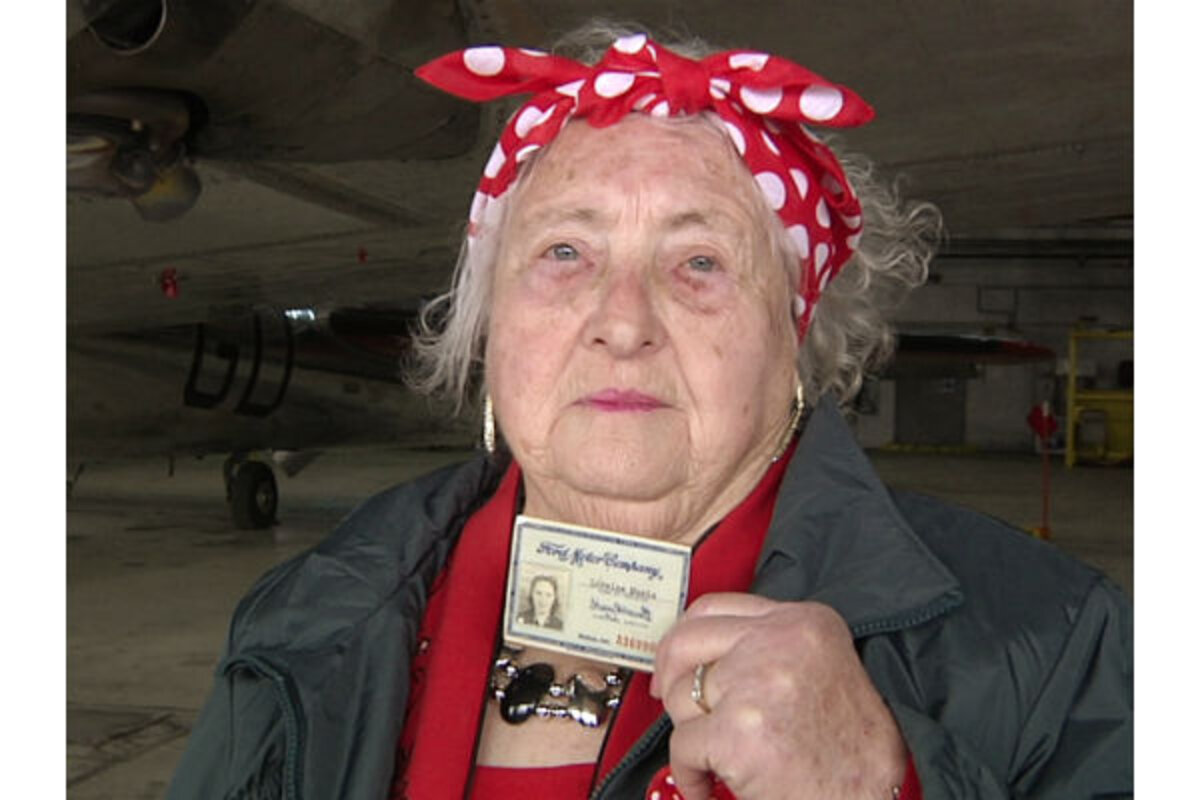Rosie the Riveter factory preserves women's history
Loading...
The wrecking ball is poised to demolish the iconic Willow Run plant in Michigan, which produced not only bombers for World War II, but also inspired the iconic symbol of female empowerment and American wartime unity, "Rosie the Riveter." It’s a good time for parents to remind kids that “Rosie the Riveter” is not only a Halloween costume.
Long before there was a “Lean In” philosophy from Facebook's chief operating officer Sheryl Sandberg (who has a net worth of more than $1 billion, according to Forbes) or the queendom of Oprah (who has a net worth of $2.9 billion, according to Forbes), there were everyday women sweating in factories to support America’s war effort while their men were an ocean away, waiting for the munitions and planes they labored to produce.
Before even discussing the fact that the factory where women played a crucial role in the war effort is about to be demolished, I feel the need to back up and explain the significance of what we’re really talking about here.
As kids typically learn around the 8th grade, after the Japanese bombed Pearl Harbor in 1941, much of the male workforce went off to war as America became engaged in World War II.
That meant precious few able-bodied men were left at home to “man” the factories and produce munitions and aircraft to supply the war effort.
That’s when the US government launched a full-scale campaign to recruit women to the war effort as the nation’s untapped resource. The government hired the J. Walter Thompson advertising agency to to work in the factories.��
As women were recruited, so were assembly lines, with Willow Run, a Ford car plant outside of Detroit, transforming into the headquarters to build bombers during the war.
The plant built 8,685 B-24 Liberators in all, thanks to the work of Rose Will Monroe – the inspiration for the Rosie character – and tens of thousands of other female workers who lived in .
After building bombers, and later going back to building cars, the Willow Run factory transitioned back to producing automobiles for more than a half-century after the war ended, until it was closed for good in 2010.
A campaign has been in place to ��from��demolition. According to reports, over the last year, supporters have raised $7 million of the total $8 million needed to preserve part of the building. However, they only have until Thursday to raise the funds needed.
“We can do it” was the "Rosie the Riveter" slogan and America is poised to fall flat on that promise if there aren’t those – perhaps some of America’s most prominent women in business – willing to step in with the final million.
If anyone could come in at the 11th hour, it would be Christy Walton (with a reported net worth of $28.2 billion, according to Forbes)
With Wal-Mart’s latest campaign to bring back work to American, this could be the perfect promotion.
My suggestion is to donate the million then sell Rosie T-shirts and gear with a percentage of the proceeds going to a fund to maintain the site.
Parents don’t have to wait until their child is in middle school to teach them there’s more to this icon than the fact that Rosie is a tough chick on a cool retro poster who rocked a polka-dot kerchief and toned biceps.
That’s why saving this slice of the Detroit-area��factory where the real Rosie and other women worked to support the war effort is so important to parents.
In much belated recognition of their wartime service to the defense industry, a collection of real-life "Rosie the Riveters" was at the White House.��
Before the factory razing issue made the national radar, it seems the symbol of "Rosie the Riveter" was perilously close to becoming nothing more than a pop culture costume choice with Web pages dedicated to like her.��
Case in point, Glamour Magazine did a of women that included actress Alexis Bledel. Even the matriarch of the Kardashian clan, Kris Jenner, has done a Rosie .��
And photo sharing site Flikr has an omage to “.”��
Rosie, in many ways, has somehow become more of a glamor symbol, totally missing the point that what those women in that factory did was far from pretty.
The image I prefer to see through Rosie-colored glasses was done for the and was actually the first to represent the branding image for the Department of Defense.
In Rockwell’s take, Rosie is more full-figured, and not as glamorous as even the “We Can Do It!” posters that came later.
No siree!
The Rosie Rockwell envisioned was no pinup, but sitting on a stool in her coveralls, sans kerchief, goggles nesting in her messy, wavy, reddish-brown hair, and holding a loaded sandwich in one hand as a riveter rests across her lap.
I hope Rosie’s factory will still be with us after the Thursday deadline. However, if it’s not, the real picture of who those factory-working women were and what they did for our nation and generations of women is all the more important to passed on to our kids.
[Update 5-1-2014: The Yankee Air Museum released this statement on its 'Save the Bomber Plant Campaign.'
“The fundraising efforts have been successful enough that we are moving to the next step of the campaign which is working on an actual Purchase Agreement.�� As you can imagine, outside of the fundraising efforts, one of the most difficult parts of this project has been the figuring out the very challenging infrastructure issues related to preserving the old Bomber Plant.�� We are hoping to resolve these issues as quickly as possible and anticipate a purchase agreement will be signed in the next 7 to 10 days."
��
Fundraising, however, will continue without interruption in order to be prepared for any additional expense required to resolve the infrastructure issues as well as to be prepared for later phases of this project including the creation of the new facility’s planned exhibits.
��
More information on the Bomber Plant and the Save the Bomber Plant Campaign is available at:
��





